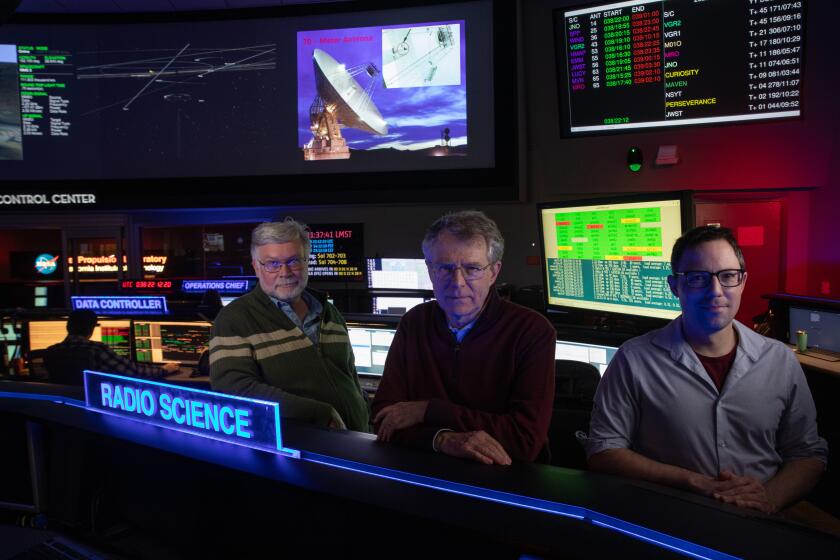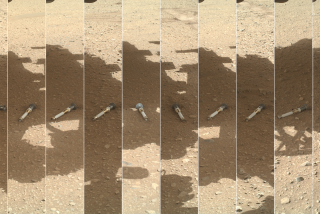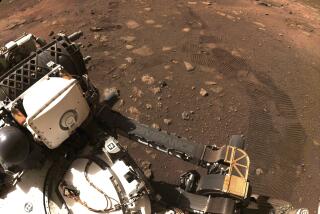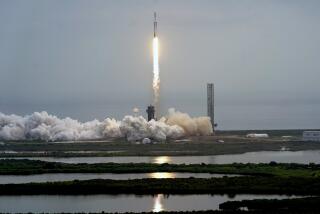NASA finally figures out how to open a $1-billion canister
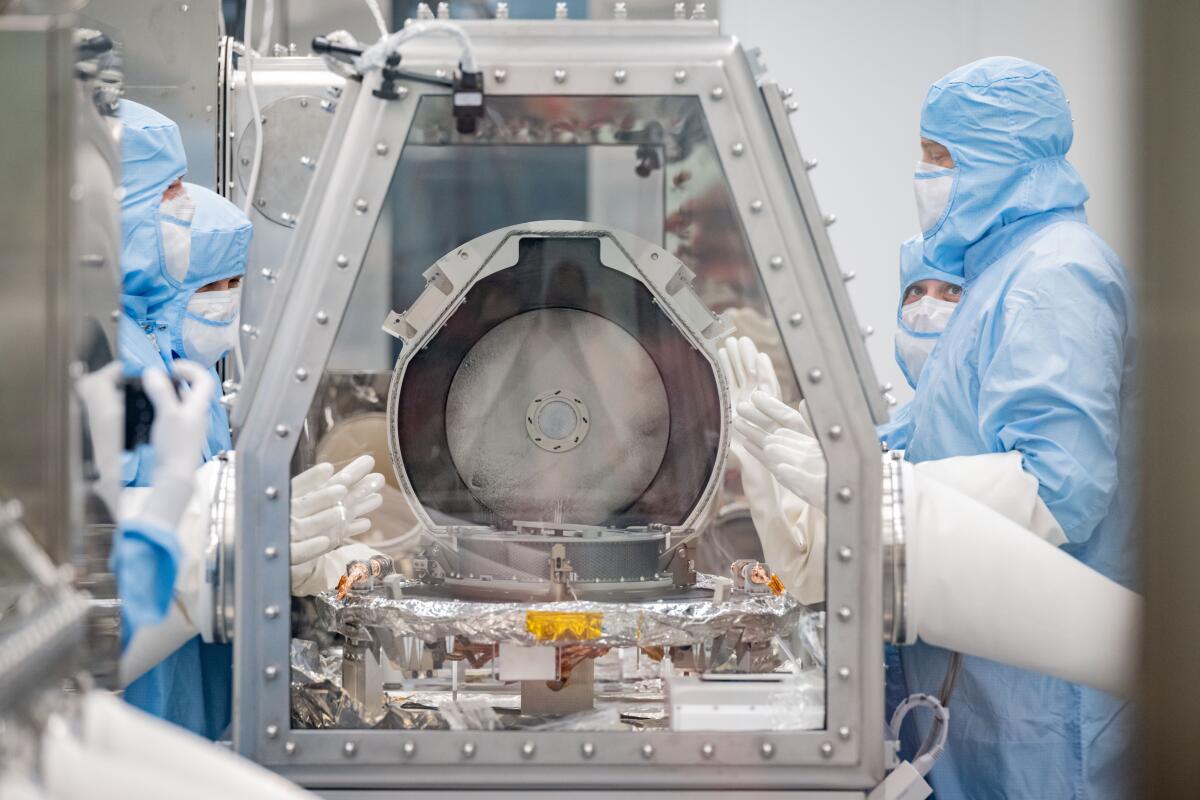
Late last year, a spacecraft containing samples of a 4.6-billion-year-old asteroid landed safely in the desert after a 1.2-billion mile journey. There was only one little problem: NASA couldn’t get the canister containing its prized rocks open.
After months of tinkering, scientists at NASA’s Johnson Space Center in Houston finally dislodged two stuck fasteners that had kept the pieces of the asteroid Bennu out of researchers’ hands.
“It’s open! It’s open!” NASA’s Planetary Science Division posted Friday on X, along with a photograph of the slate-colored bounty of dust and small rocks inside the canister.
Scientists had to switch course on the canister opening effort in mid-October after it became clear that none of the items in NASA’s box of approved tools could force open the last two of 35 fasteners sealing the canister.
To prevent the sample from being contaminated by Earthly air, it has been stored in a clean room in the Houston facility where hazmat-suited curators delicately dismantled the canister. The team custom-designed new tools to pry open the final latches.
In academia particularly, a charge of plagiarism can be devastating. Software makes it easier than ever to spot attribution errors in published works, which can then be weaponized for political gain.
The agency will now finish extracting the approximately 9-ounce sample, which will be weighed and chemically analyzed. Much of the payload from OSIRIS-REx (an acronym for Origins, Spectral Interpretation, Resource Identification, and Security-Regolith Explorer) will then be frozen and carefully preserved so that future generations of scientists will be able to study it with advanced technologies.
“We are overjoyed with the success,” NASA’s chief OSIRIS-REx sample curator, Nicole Lunning, said in a statement.
It took more than seven years and roughly $1 billion to bring back a sample from Bennu, a space rock formed during the earliest days of the solar system. The asteroid samples found on Earth have essentially been cooked by their searing journey through the atmosphere, which limits what scientists can learn from them.
With OSIRIS-REx, “the objective is to bring back an ancient piece of the early solar system that is pristine,” NASA astrobiologist Jason Dworkin told The Times in September. “You can use these leftovers of the formation of the solar system to construct what happened in that formation.”
The spacecraft that collected the sample in 2020 and released it toward Earth in September is now heading on to its next mission. The craft, now named OSIRIS-APophis EXplorer, or OSIRIS-APEX, is on its way to a peanut-shaped asteroid named Apophis.
A huge asteroid will fly by Earth in April 2029. It won’t be close enough to hit us, but it will be close enough to study, so scientists are getting ready.
For a short (but alarming) time, astronomers thought Apophis might be on track to smash disastrously into Earth. Now that that worrying possibility has been ruled out, scientists are eagerly looking ahead to 2029, when the asteroid will pass closer to Earth than any object of its size ever has.
“It’s something that almost never happens, and yet we get to witness it in our lifetime,” JPL navigation engineer Davide Farnocchia said last year. “We usually send spacecraft out there to visit asteroids and find out about them. In this case, it’s nature doing the flyby for us.”

